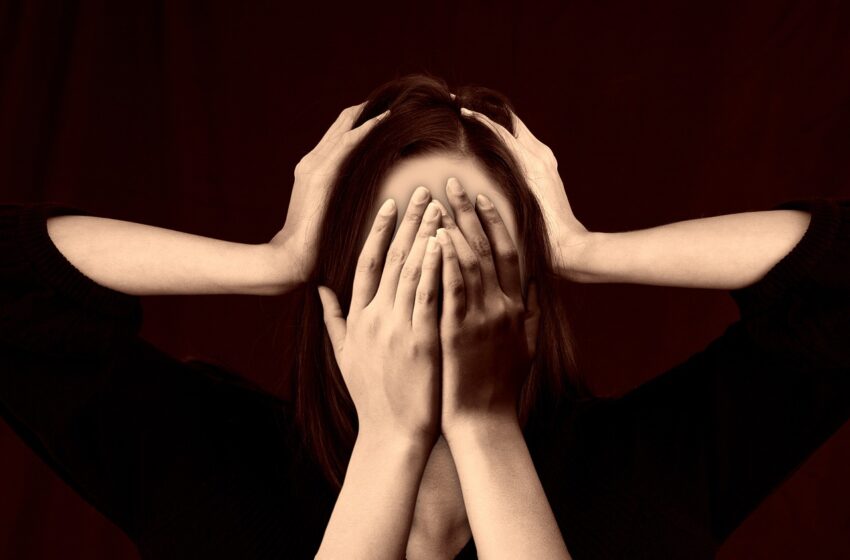The Shocking Revelation of Cluster Headache Treatment

Cluster headache treatment are brief yet excruciating headaches that occur daily for weeks or months. They usually appear simultaneously yearly, such as in the spring or autumn. As a result, cluster headaches are often misdiagnosed as allergies or job stress.
A cluster headache treatment occurs when a neural pathway at the base of your brain is stimulated. That signal seems to originate from the hypothalamus, a deeper portion of the brain that houses the “internal biological clock” that regulates sleep and waking cycles.
The trigeminal nerve, which is damaged, is responsible for feelings such as heat or discomfort in your face. It starts at your eye and spreads to your brow, over your face, down your jaw, and above your ear on the same side.
A brain disease like a tumor or aneurysm does not cause these headaches.
Cluster Headaches Characteristics
There are a few characteristics that distinguish this sort of headache. They are as follows:
Speed. Cluster headaches often reach their peak intensity within 5 to 10 minutes.
Pain. It’s usually always on one side of your head and remains on the same side for some time, during which you have daily assaults. (When a new headache cycle begins, it may move to the other side, although this is uncommon.) It’s often characterized as piercing or searing. It might be throbbing or continuous. It will be felt behind or around one of your eyes. It can expand to your forehead, temples, nose, cheek, or upper gum on that side. Your scalp may be sensitive. Your blood is often pulsating.
Short duration. Cluster headaches often persist between 30 and 90 minutes. They may last as little as 15 minutes or as long as 3 hours, but eventually they vanish. You’ll most likely get one to three of these headaches each day. Some individuals get one every other day, while others receive up to eight times daily.
Predictable. The circadian rhythm, your body’s 24-hour schedule, is associated with attacks. They occur so often, and usually simultaneously each day, that they have been dubbed “alarm clock headaches.” They may awaken you an hour or two after you go to bed. Nighttime assaults are sometimes more severe than daytime attacks.
Frequent. Most patients will have daily headaches for 2 to 3 months, with at least two weeks of pain relief in between.
Signs and Symptoms
Typically, the pain begins abruptly, frequently around or behind the eye.
- Pain or a moderate burning sensation
- A puffy or sagging eye
- A reduced pupil size within the eye
- Redness or watery eyes
- A runny or stuffy nose
- Reddish-hot cheekbones
- Exhaling perspiration
- Sensitivity to visible light
- Instability or agitation, circling
Cluster migraines are more prevalent among smokers and frequent consumers. During a cluster period, you’ll be more sensitive to alcohol and nicotine. A small amount of alcohol can induce a hangover. However, imbibing does not cause headaches during headache-free periods.
Triggers
Any of the following may cause a headache during a cluster period:
- Increase your altitude
- A strong light
- Effort or exercise
- Tobacco smoke
- Alcohol
- Strong odors
- Cocaine
- Nitrate-containing foods, such as bacon or lunchmeat
Cluster vs. Migraine Headache
Both forms of headaches are excruciating. However, how hurt and where you feel them varies.
Migraine headaches start slowly and may last from a few hours to a few days. You may experience warning signals such as food cravings or mood changes up to a day before the pain begins. Auras may also appear soon before a migraine attack.
Migraine causes throbbing pain. A cluster headache commonly only affects one side of your head, whereas a migraine might affect both sides, one side exclusively, or the whole forehead. When you move your head, it will most likely grow worse. You might also have:
- Vomiting and nausea
- Light, sound, and scent sensitivity
- Colored patches, lines, flashing lights, or sparkles in your eyesight, called auras.
- Tingling or numbness
- Weakness
- Having difficulty speaking or hearing
After a migraine, you may have a “hangover,” in which you feel sleepy or disoriented. Your doctor may refer to this as a postdrome time.
A migraine may be caused by a variety of factors, including:
- Weather variations
- Excessive or insufficient sleep
- Strong odors
- Stress
- Disturbing sounds
- Inadequate sustenance
- Depression or anxiety
- Certain medications
- Changes in hormones
- Caffeine, some meals, and food additives
Treatment
When it comes to cluster headache treatment, you have numerous options:
Medications
When a headache strikes, the following therapies may help:
- Triptans. These medications are among the most effective pain relievers. You might get:
Sumatriptan (Imitrex, Onzetra Xsail, Sumavel, Zecuity, Zembrace SymTouch) may be taken orally or as an injection.
Zolmitriptan (Zomig) is a medication.
- DHE 45 (dihydroergotamine). The ergot fungus is the basis for this prescription medication.
- Octreotide. This is a synthetic version of the growth hormone somatostatin. An IV in your vein administers it.
- Lidocaine. This is a nasal spray that provides pain relief.
- Oxygen. Your doctor may refer to it as breathing oxygen. For 15 minutes, you’ll live it in via a face mask.
Preventive treatment may frequently prevent headaches from occurring. Your doctor may recommend medicine to shorten a cluster and make episodes less severe, such as:
- Gabapentin (Gralise, Neurontin)
- Verapamil (Calan, Verelan)
- Ergotamine tartrate (Cafergot, Ergomar)
- Galcanezumab (Emgality)
- Lithium carbonate
- Topiramate (Qudexy XR, Topamax, Trokendi XR)
- Corticosteroids like prednisone
- Divalproex sodium (Depakote)
Occipital nerve block (or occipital nerve injection by your doctor). The doctor will inject a steroid and anesthetic mixture into these nerves. They are located near the base of your skull and are often the source of headaches. This is a stopgap measure until a preventative action can be implemented.
Stimulation of the nervous system. If medicine does not work, some individuals find that:
- Stimulation of the occipital nerve. A device that transmits electrical impulses to this collection of nerves at the base of your skull is surgically implanted by your doctor.
- Neuromodulation. Noninvasive devices approved by the FDA include:
- Cefaly. Electrodes are placed on your forehead and connected to a headband-like controller, which delivers impulses to your supraorbital nerve.
- GammaCore. This device, a noninvasive vagus nerve stimulator (nVNS), sends impulses to the vagus nerve through electrodes.
Surgery
Surgery may be an option for patients who suffer from cluster headache treatment regularly if nothing else works.
Deep brain stimulation, which requires inserting an electrode deep into the brain, is giving way to less invasive alternatives.
Most operations include blocking the trigeminal nerve, a significant pain channel. It regulates the region surrounding your eyes, but a mistake may cause jaw weakness and loss of feeling in your face and head.
